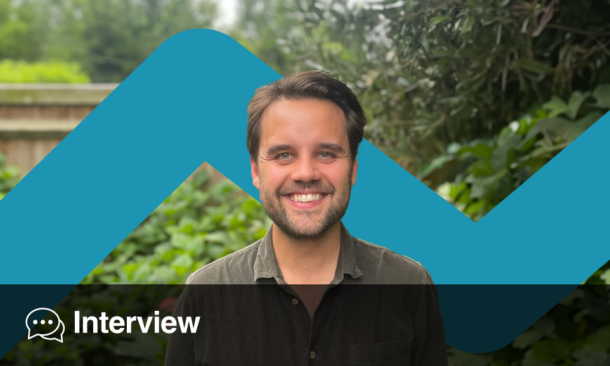Akil Benjamin
Business Design Partner, Comuzi, London, UK
According to Merriam-Webster, innovation is: “the introduction of something new.” As we look into business with various companies however, they are looking more towards innovation to survive in our current ‘innovate or die’ era, rather than looking at ‘something new’. Innovation is starting to take on a multitude of unassociated definitions such as ‘saviour’, ‘rescuer’, and ‘redeemer’.
In regards to business in London alone, I have been to countless conferences where the definition of innovation has been the topic of discussion. Generally, the consensus has been that innovation is the change or creation of a process, product, or idea which is adopted successfully to benefit a business, with successful outcomes being understood as better productivity, better performance, or improved efficiency.
Although this current perspective is not wrong, I believe that those speaking about the topic from this point of view feel uncomfortable. The business community has settled on a definition, however in this case, one question only leads to another. Soon the question of ‘how to innovate’ arises and many who were previously vocal in such discussions go silent. They do not know, or more interestingly, cannot vocalise their thoughts beyond the abstract nor distil their key points in a way that the rest of the audience can understand. These key issues have highlighted a ‘white space’ within the consulting industry and over the last 10 years there has been a spring of companies looking to capitalise on the discomfort and unease businesses have around the topic of innovation.
As consultants model various solutions on ‘how to innovate’, the question ‘what is innovation?’ arises in a different context. Is innovation one specific process? Can you innovate using a variety of different processes? Do we even understand innovation? How do we arrive at the idea of ‘something new’ to change or create a new process or product? To frame such questions with my current thoughts on innovation, I view innovation as a liberal science that combines its various definitions from trivium (the study of grammar, rhetoric, and logic) and better understood academic disciplines such as history, philosophy, and most especially anthropology. This only works however, if innovation has a purpose. Purpose-driven innovation mirrors anthropology in its practice of applying knowledge to provide solutions toward human problems.
Anthropology is the study of humankind, that tries to understand the complexities of cultures across human history. Within it there are many parallels with purpose-driven innovation, especially within business. A business problem is fundamentally a human problem. Understanding the full sweep and complexities of culture across a business’ history is what many innovators do to highlight a business’ limiting factors, creating a framework in which a business problem is to be solved.
Without the formal study of anthropology or any liberal science I innately believe many employees of companies are continuously innovating within their silos, using their experience and understanding within their business and industry to be more productive or more efficient. With basic forms of ideation stemming from the want to find the route of least friction to achieve a goal, its process also factors in the intuitive processes of human-centred design as individuals look to make their own jobs easier. I believe innovation is constantly occurring. Even on the supposition that basic innovations are achieved through laziness, discovering how to do the least amount of work to achieve the maximum outcome, is innovation in itself.
The way that companies actively innovate, homing in on the subconscious skills that go into innovation, parallels in anthropology especially when we view innovation as a process. Similarly, as business innovators conduct market research on consumers’ buying trends to ascertain insight into a specific market, anthropologists use principles of ethnography to explore cultural phenomena.
Moving beyond ideation, which is essentially the development of a hypothesis, and market research/ethnography (being interchangeable in this context), it becomes clear that the practice of innovation follows the practicing principles of any science. What is active innovation? My definition of active innovation is only a suggestion but it does outline the action of many innovation consultancy firms across the market:
“An intellectual and practical activity, systematically studying the structure and behaviour of the physical and natural world through observation and experiment, with the results looking to better improve outcomes, through the introduction of something new.”
Human-centred design, a key feature of today’s innovative process, is design anthropology. The study of innovation is the practice of anthropology; granted the latter holds more grandeur due to the levels of altruism involved, but the fundamentals of understanding people, culture, and process are all the same. As the National Health Service (NHS) calls for innovation through various different mediums, it becomes apparent that innovation is continuously occurring on all levels. The dissemination of these innovations however, has proven difficult. Though complex, the NHS is starting to find value in innovation, creating a culture in which these ideas and developments are shared. With select innovations chosen for development based on their merit and their applicability towards the NHS’s chosen purpose, reducing the £20 billion deficit looks possible. The NHS looks towards innovation for its survival.
The opening of the mind, the use of intellect, and the application of knowledge from a variety of sources to form organised solutions are all skills being uncovered by practitioners of innovation as we study ourselves and the world around us. As well as the study of humankind, the wonder of the mind allows innovators to draw understanding from abstract principles and apply them to completely new fields, thus employing cognitive and comparative thinking structures to solve the problem at hand. As people become more educated about innovation and its principles, they will soon realise its roots in science. I believe the internet democratises knowledge and thus there will be an increase in people wanting to formally study innovation as an academic liberal science subject which will draw out parallels with anthropology in some aspects. But as the study of innovation progresses and its parallels draw closer to anthropology I believe a clear understanding should be made: innovation is the practice of anthropology, but the practise of anthropology is not the practice of innovation. Innovation solves a business problem. A business problem is a human problem, but not all human problems are business problems.
All information obtained by European Medical Journal and each of the contributions from various sources is as current and accurate as possible. However, due to human or mechanical errors, European Medical Journal and the contributors cannot guarantee the accuracy, adequacy, or completeness of any information, and cannot be held responsible for any errors or omissions. European Medical Journal is completely independent of this blog piece, views and opinions expressed are those of the authors.







